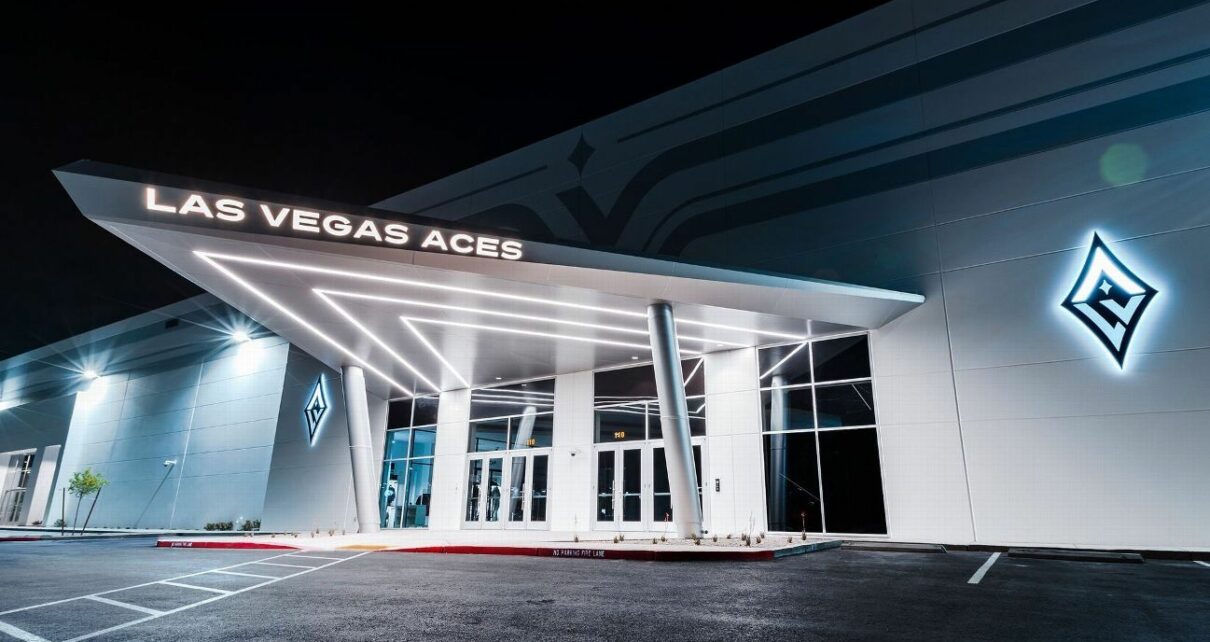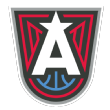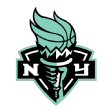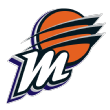The Las Vegas Aces’ new team center reenergized conversations around the WNBA over the state of team practice facilities, their varying degrees of quality and the inherent competitive advantages some might offer. While the Aces’ facility is the new ideal, some would argue the new standard, it’s far from the norm across the WNBA.
Some teams have long commutes to practice. Many share spaces with NBA or college teams or rent out rec centers. It’s not uncommon for squads to practice in the very buildings they play games. The array of amenities, from on-site food to recovery technology, widely varies. Some teams have practiced at the same site for years, while others don’t yet have permanent homes.
How organizations respond to the Aces’ and Seattle Storm’s investments in their new facilities — especially at such a critical time in the league’s development with the recent introduction of true free agency — is something to continue to monitor.
In the meantime, ESPN breaks down each WNBA team’s current practice facility setup as well as the highlights and potential areas for improvement of each situation.
Atlanta Dream
The Dream practice at Core4, a facility built by former NBA player Paul Millsap, who with his three brothers runs an elite development academy there. Former Dream president Theresa Wenzel is the chief operating officer at Core4. The facility has multiple practice courts, a weight room, saunas, hot and cold tubs and a nutrition station.
What are the pros? The Dream are in their second year at Core4, and it’s more a professional-level facility than their previous practice homes at local colleges. It has everything they need in one place, even though it’s not specifically “their” home.
What are the cons? It’s about 23 miles away from Gateway Center Arena, where the Dream play, so it’s not as convenient as training facilities that are part of or close to teams’ arenas. — M.A. Voepel
Chicago Sky
The Sky have practiced at Sachs Recreation Center, in the Chicago suburb of Deerfield, since 2011. From 2010 to 2017, the Sky played games at AllState Arena in Rosemont, Illinois, which was right by O’Hare Airport and about 17 miles south of Sachs.
In 2018, the Sky moved games to Wintrust Arena at McCormick Place in the downtown area, which is even farther south of Sachs, at about 29 miles.
What are the pros? Familiarity, perhaps? As mentioned, the Sky have practiced there in Chicago’s northern suburbs for a long time. It was a little more convenient, though, when the Sky played games at AllState Arena. There is a pool, whirlpool, weight rooms and meeting rooms at Sachs.
What are the cons? It’s far from where games are played. It’s a public facility that doesn’t belong to the Sky, even though the center renamed the basketball court after them and painted it Sky team colors when they won the 2021 WNBA title. The Chicago Sun-Times reported in May that the Sky — aware of the potentially negative impact their practice-facility situation might have on free agency — are looking to potentially build their own facility. But for now, it appears the Sky will be at Sachs at least through 2024. — Voepel
Connecticut Sun
The team uses Mohegan Sun Arena, the Connecticut Sun’s home court, when there aren’t conflicts with concerts or shows. When they can’t get into the arena, the team uses the Tribal Practice Facility, part of the Mohegan Community and Government Center, which offers locker facilities, a weight room and training room with hot and cold tubs, a film room and a small kitchen with food for players.
What are the pros? Since the Sun are owned by the Mohegan Tribe, the team’s use of the Tribal Practice Facility makes sense in a lot of ways logistically. “It’s super nice that the tribal center allows us to practice there,” guard Natisha Hiedeman said. “They’re super flexible with us and allow us to practice there. It’s been good. I mean, can’t really complain.” It’s convenient too; the building is less than a 10-minute drive from Mohegan Sun Arena.
What are the cons? The practice area is part of a government building, so it doesn’t offer many of the pro-basketball-specific bells and whistles other facilities have. Also, the team doesn’t have exclusive access to the facility, so players can’t use it whenever they want. — Alexa Philippou
Dallas Wings
The Wings use College Park Center, which is the same place the team plays its games. It is located on the University of Texas at Arlington campus. The Wings usually practice on the main arena court. There are also two auxiliary courts available to them, along with a weight room and medical training area, at CPC. The Wings have their own locker room there.
What are the pros? CPC is the hub for everything for the Wings, and the majority of the players live about five minutes from the arena in team-provided apartments. UT Arlington is in a suburban area of Dallas-Fort Worth metroplex, so it’s a quick commute to games and practice for the Wings. And the size of the arena, which sits about 7,000 spectators, is a good size for the team.
What are the cons? The Wings are one of the official tenants, but not the only ones. The facility, which opened in 2012, belongs to UT Arlington and is home to the Mavericks’ men’s and women’s basketball teams and the volleyball team. The Wings moved there in 2016, after relocating from Tulsa.
The Wings’ locker room is used solely by the team during the WNBA season. But then the Wings’ branding is taken off the room during the offseason and it can be used for other purposes. The UT Arlington teams each have their own locker rooms in the arena. — Voepel
Indiana Fever
The Fever practice at Gainbridge Fieldhouse, their home arena. They have their own practice facilities there that are open to players year-round. The entire field house has been going through stages of renovation the past few years. Some of the Fever-specific updates were revealed in January 2021, including improvements made to the practice court, meeting room, training room, locker room, weight room and coaches’ office.
What are the pros? The Fever share the state-of-the-art facility with their affiliated NBA franchise, the Pacers, and the WNBA team has its own Fever-branded space. It’s available for players to train in during the WNBA’s offseason, as well. Gainbridge is located in downtown Indianapolis and easy to get to.
What are the cons? The Fever were displaced from Gainbridge while renovations were going on, playing at Indiana Farmers Coliseum and Butler University’s Hinkle Fieldhouse in 2021 and much of 2022. But having paid that price, the Fever came back to Gainbridge full time this season, and the renovations were worth the wait. — Voepel
Las Vegas Aces
Las Vegas became the first WNBA team to construct a practice facility solely for team use this season. The Aces’ headquarters and practice facility features two full-size courts, a spacious weight room with a system that recognizes each player and caters workouts to their individual needs, as well as hot and cold tubs, cryotherapy and more.
What are the pros? The exclusivity of the Las Vegas facility stands alone. “Not having to worry about who’s coming on the court or being off because this team has to get on or whatever,” said forward Alysha Clark, who has previously played for the Seattle Storm and Washington Mystics. “It’s just yours. You feel at home, you feel relaxed, you feel at ease knowing that all those resources that are in there are for you. It’s a pretty cool feeling.”
What are the cons? If we’re picking nits, the Aces’ facility in the suburb of Henderson is farther from the team’s home court at Michelob Ultra Arena in the Mandalay Bay than the locations the team previously practiced, including on campus at UNLV. — Kevin Pelton
Los Angeles Sparks
The Sparks have been using El Camino College in Torrance, California, as their practice site this year. The facility offers the team exclusive access during practice times to the main court, weight room, training room and coaches’ office as well as exclusive use during the season to the women’s basketball locker room. To make it feel more like home, Sparks branding has been added throughout the facility for the summer.
What are the pros? The facility is an upgrade over previous ones the Sparks have used, such as Jump Beyond in Torrance (2022) and The Academy in Pasadena (2021). It is fairly convenient to get to, at least by L.A. standards, as it is situated 20 minutes away from downtown and away from inbound traffic.
What are the cons? While some teams have practiced at the same site for years, the Sparks have had a rather nomadic practice facility experience. The partnership with El Camino College began this year, marking the third practice headquarters they’ve used in the past three years.
The first two weeks of training camp in 2022 were held at the UCLA Health Training Center in El Segundo, California, which hosts the G League’s South Bay Lakers and is the training center for the NBA’s Lakers — a tantalizing taste of what so many WNBA players hope to one day be able to more regularly access. — Philippou
Minnesota Lynx
The Lynx use The Courts at Mayo Clinic Square, the practice facility they’ve shared with the NBA’s Timberwolves since 2015. There are practice courts for both teams, locker rooms, treatment pools, saunas, film rooms, a player lounge and nutrition center. And, of course, the Mayo Clinic has a sports medicine clinic there too.
What are the pros? Before this facility opened, the Lynx practiced on courts below ground level at Target Center, which were part of the Life Time Fitness center there, an area open to the public. It wasn’t a bad setup, but it didn’t have the feel of being their “home,” and the locker room was a couple of floors above the practice courts.
The current facility is just across the street from Target Center, connected by one of Minneapolis’ many enclosed sky bridges, and gives the Lynx their own practice home right next to where they play their games.
What are the cons? There really aren’t any. When the facility opened in 2015, then-WNBA president Laurel J. Richie toured it along with NBA commissioner Adam Silver. “I do believe that this is the gold standard across our league,” Richie said at the time. — Voepel
New York Liberty
The Liberty have a unique setup in which they use the practice court in Barclays Center as their home base, meaning players get to use the same locker room and weight room as they do on game days.
What are the pros? Accessibility. The player housing offered by the team is in apartments next to Barclays, eliminating their commute to practice and games. “I couldn’t have done better myself,” New York general manager Jonathan Kolb said. “We have a situation where they live upstairs, they come down here, we have our locker room, hydro room, weight room, all those things right in this facility, which is a masterstroke because we can have players not need to travel and get everything.”
What are the cons? Because of space limitations within the arena, the Liberty have access to only a single court as compared to the two side-by-side courts that are standard in separate shared NBA/WNBA practice facilities and the new ones being constructed by independent teams. — Pelton
Phoenix Mercury
Described as a state-of-the-art facility when it opened in November 2020, the Verizon 5G Performance Center is home to both the Mercury and Suns. The facility features two courts, innovative technology, an outdoor training area, chef-prepared meals and a separate section upstairs to watch games or film on massive TV screens — all an improvement from the training facilities in the basement of what was then known as Talking Stick Resort Arena.
What are the pros? The Mercury have their own dedicated locker room in the facility. But the shared space also brings NBA-level resources. For example, during one day of offseason workouts, Diana Taurasi spent five consecutive hours at the facility, participating in an hourlong scrimmage; lifting weights; getting 90 minutes of massage, acupuncture, cupping therapy and soft tissue work; doing Pilates; and stretching — before ending the day in a cutting-edge pool room, first on an underwater treadmill then in a hot tub.
What are the cons? With the Suns reaching the playoffs over the past three seasons, the Mercury sometime need to change their practice schedule in season to accommodate the Suns’ postseason needs. The facility is an estimated 20 minutes away from Footprint Center, where the Mercury — and Suns — play their games. — Voepel
Seattle Storm
Since their shared facility with the Seattle SuperSonics was torn down after the NBA team’s move in 2008, the Storm have practiced in a dedicated gym on the lower level of Royal Brougham Pavilion on the Seattle Pacific University campus. Players have access to the SPU weight room and training room as well as a dedicated locker during the WNBA season. This will be the team’s final year at SPU. Seattle is building a new practice facility of its own on track to open in time for 2024 training camp.
What are the pros? Consistency. The Storm have been in the same location since 2009 and don’t have to worry about scheduling court time during the season. The location is also within a short drive of Climate Pledge Arena on the other side of Queen Anne Hill.
What are the cons? “We share this, so it doesn’t always feel like ours,” Seattle All-Star guard Jewell Loyd said. Gym access isn’t guaranteed outside of the season. The lack of space can also be a challenge. Storm players occasionally watch film on the lone practice court or even in the team’s locker room rather than having a separate, comfortable space to do so. — Pelton
Washington Mystics
The Mystics call home the MedStar Health Performance Center, which is adjacent to the Mystics’ home gym of Entertainment and Sports Arena. The facility is shared by the Wizards, Mystics and G League’s Capital City Go-Go, all of whom are under Monumental Basketball ownership. With innovative technological offerings, an expanded weight room and a recently renovated training and treatment room, Monumental describes the complex as “state-of-the-art.”
What are the pros? The convenience of having a practice facility and home court, plus a locker room, all under one roof and with 24/7 access can’t be overstated. Shared space with the Wizards also allows the Mystics to benefit from NBA resources and build relationships with Wizards players. The facility’s sauna and chefs, who provide meals from pasta to tomahawk steaks to crab cakes, also earned shoutouts from players.
Teams like Las Vegas might get most of the shine, but Washington’s setup since the opening of ESA and the MedStar Health Performance Center in fall 2018 stacks up among the league’s best. “I feel like we’ve been ahead of the game for a minute now,” forward Myisha Hines-Allen said. “I love our facility,” guard Ariel Atkins added.
What are the cons? A shared space has its downsides too, with one former player pointing out that when she was in D.C. the team needed to move out of its locker room for the offseason. — Philippou
Source: Read Full Article













